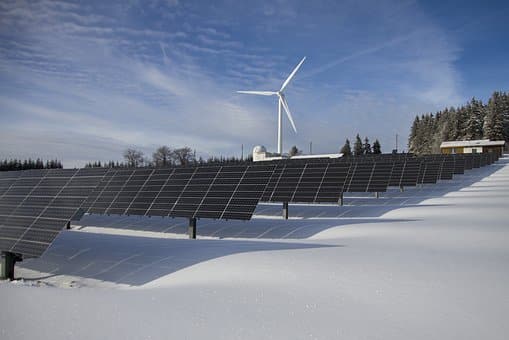California Approves Purchase of 3.3 Gigawatts of New Resources to Avoid Impending Power Capacity Shortfall

The California Public Utilities Commission voted to authorize the procurement of 3.3 gigawatts of new, non-emitting electricity resources by 2023 to forestall potential resource adequacy shortages starting in 2021, according to a Nov. 7 news release. The order also seeks to keep some natural-gas-fired power plants open past their current 2020 closure dates by recommending the State Water Resources Control Board to extend the deadlines to comply with the once-through-cooling policies by one to three years.
The decision requires load-serving entities to make 10-year, long-term investments in new in-state generation that maintains reliability and keeps California on its present trajectory toward meeting its emissions reduction targets. Utilities, community choice aggregators, and direct access providers are required to procure capacity based on their respective load shares, with at least 50 percent delivered by August 1, 2021, 75 percent by August 1, 2022, and 100 percent by August 1, 2023. The order allows 20 percent of each load serving entity’s total obligations to be met through imported power.
The new procurement must be in addition to the baseline resources identified for 2022 in the preferred system plan and the retirement extensions. In May, the commission approved a preferred portfolio that calls for 12 gigawatts of new renewables and storage by 2030. The agency attributed the tight supply to several market trends, including time of day and time of year shifts of system peak loads, the growing demand for grid integration of renewable energy resources, the retirement of aging natural gas plants, and a decline in reliable imported electricity to meet peak demand.
The commission said that the schedule adjustment of the once-through-cooling regulation is intended to serve as a bridge until the incremental system resources can be brought online. The order recommends extending the current compliance deadlines of Dec. 31, 2020 for about 4.8 gigawatts of natural gas plants, which includes:
- 1,200 megawatts at the Alamitos Generating Station for up to three years;
- 200 megawatts at the Huntington Beach Generating Station for up to three years;
- 850 megawatts at the Redondo Beach Generating Station for up to two years;
- 1,500 megawatts at the Ormond Beach Generating Station for up to one year;
- 1,020 megawatts at the Moss Landing facility temporarily in case the plant’s upgrades are not certified by December 31, 2020.
The commission’s efforts to address resource adequacy and renewable integration requirements will extend through at least 2023, and beyond, as more renewable resources are added to meet the state’s climate goals and as more fossil-fueled and nuclear power plants retire. The need for additional resources is being evaluated in the 2019-2020 integrated-resource cycle currently underway.
Load-serving entities must file an activity progress report by Feb. 15, 2020.
EnerKnol Pulses like this one are powered by the EnerKnol Platform—the first comprehensive database for real-time energy policy tracking. Sign up for a free trial below for access to key regulatory data and deep industry insights across the energy spectrum.
ACCESS FREE TRIAL